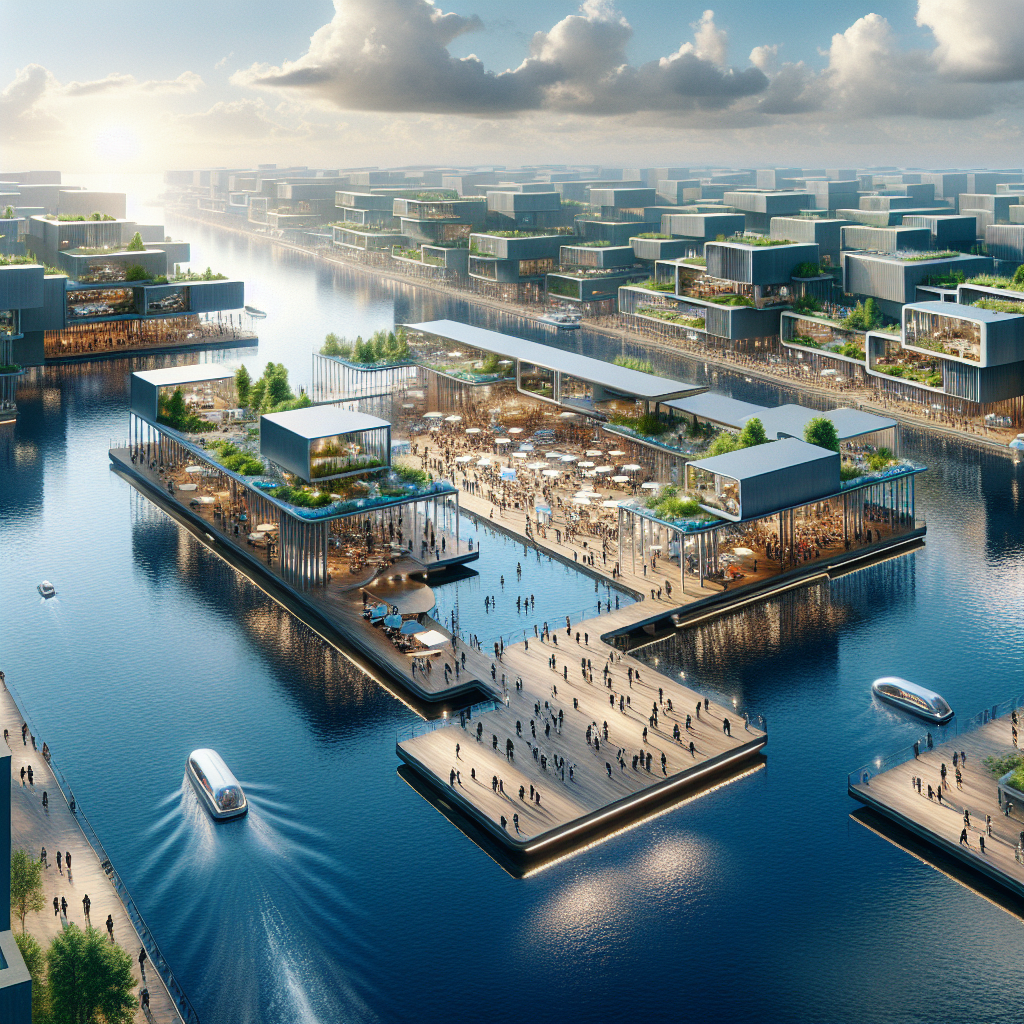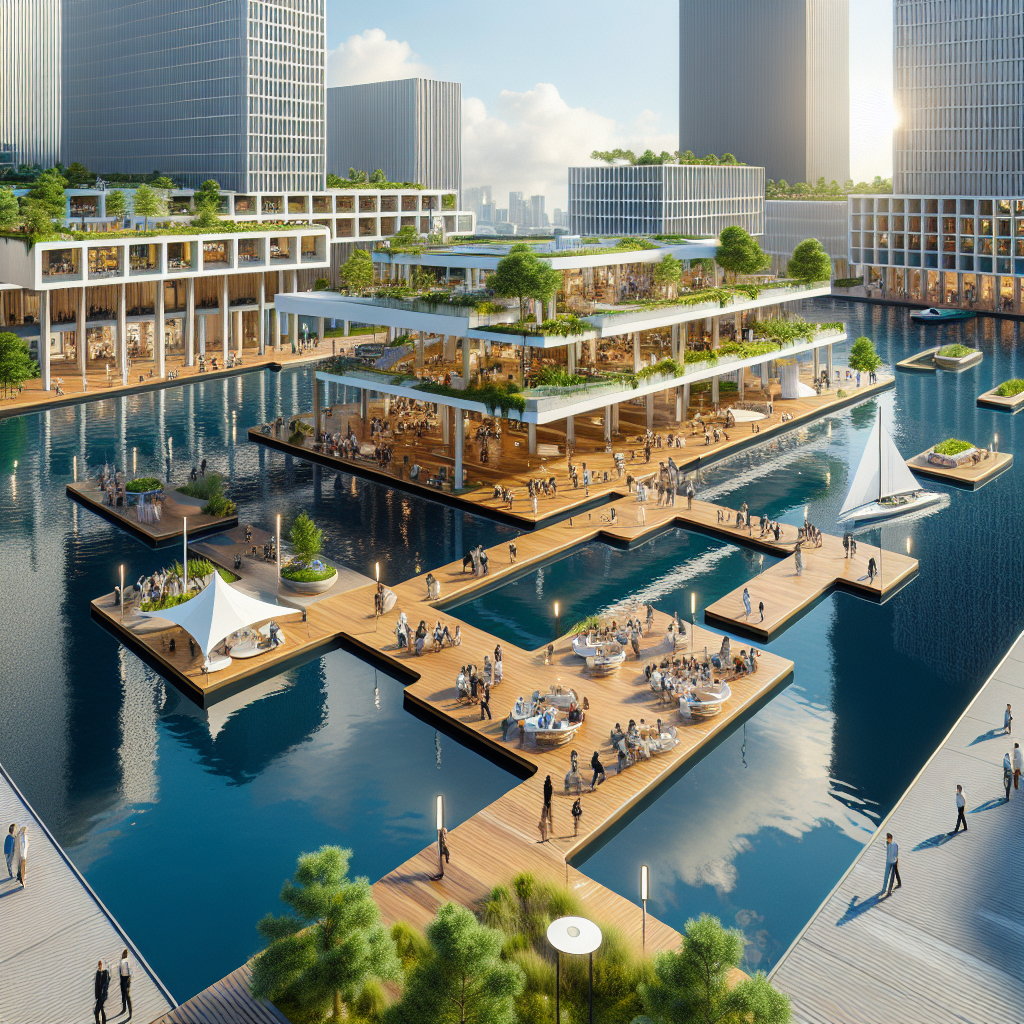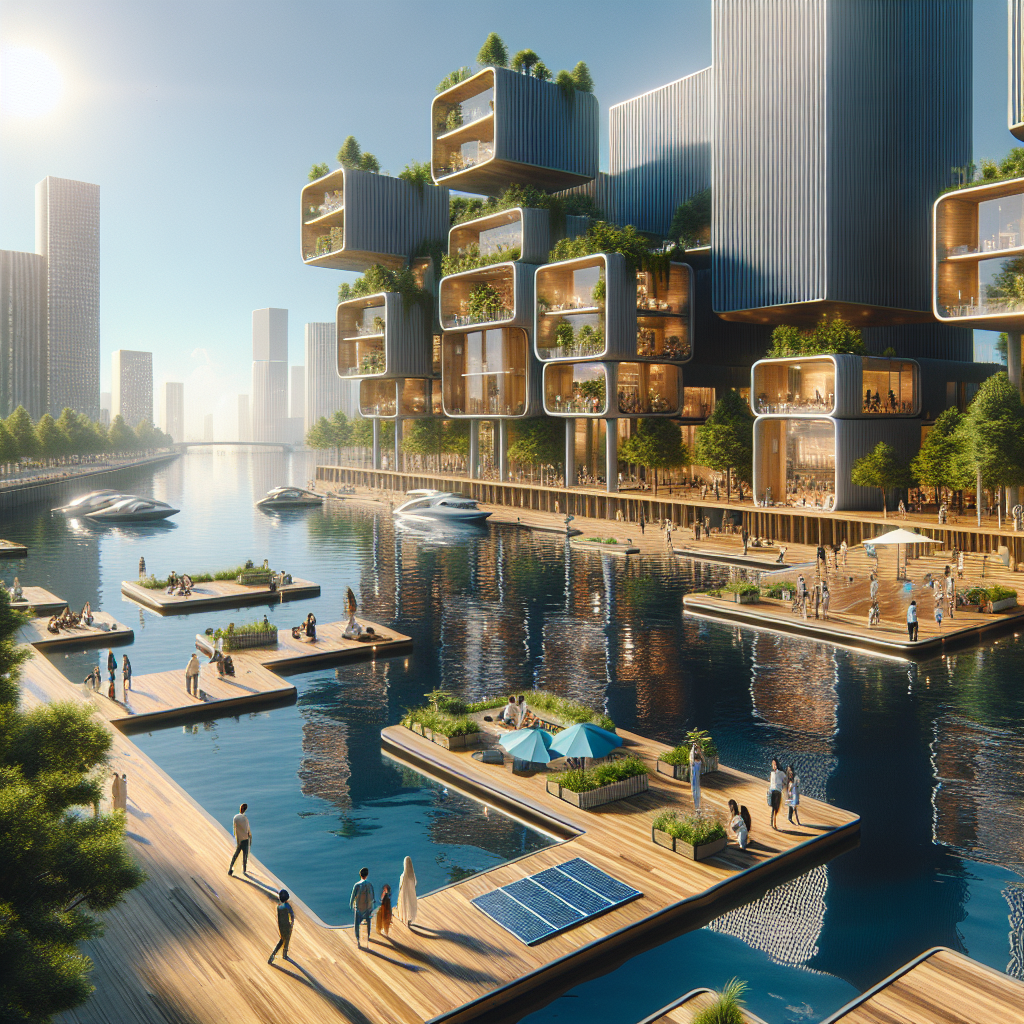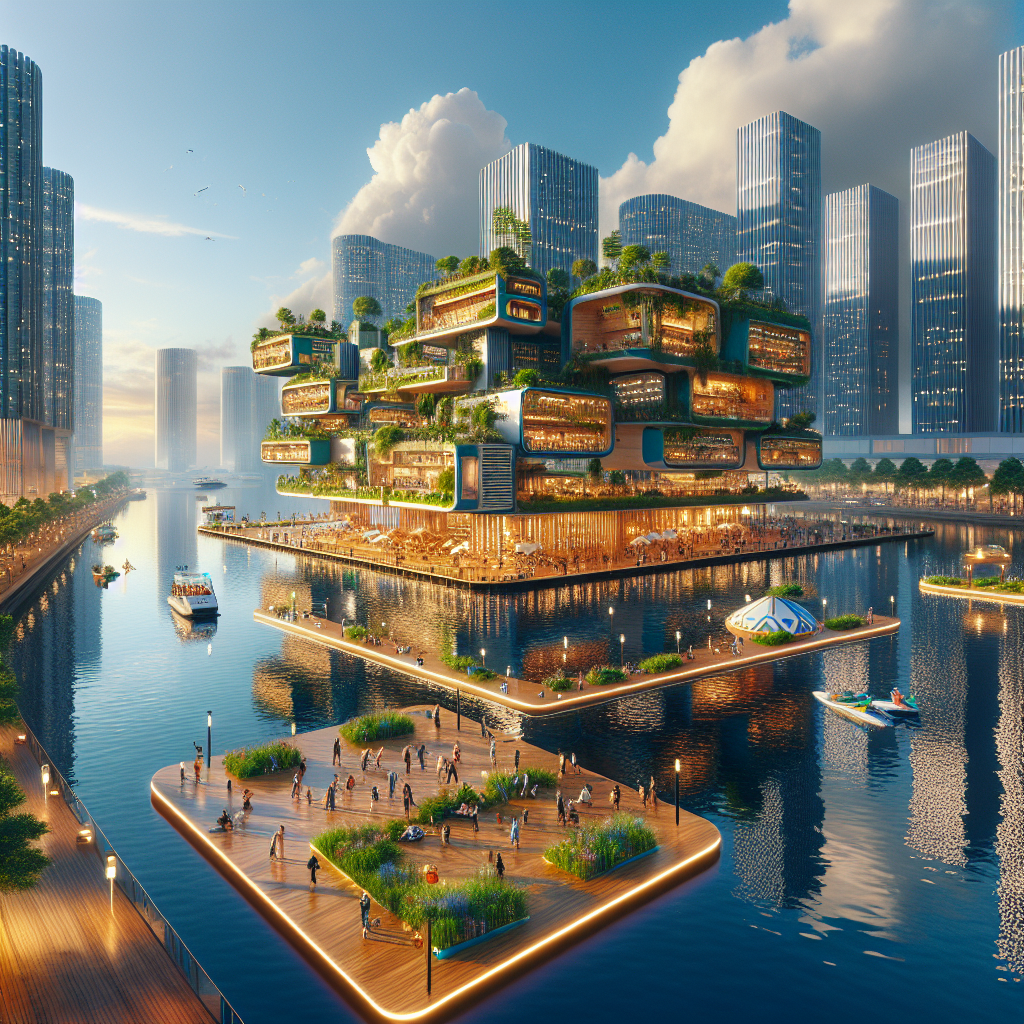Floating city squares: buoyant plazas for waterfront regeneration

Floating City Squares: Buoyant Plazas for Waterfront Regeneration
Imagine stepping onto a city square that gently sways beneath your feet, a vibrant public space seamlessly integrated with water, offering an entirely new perspective on urban living. Floating city squares are not just futuristic concepts; they are becoming tangible realities, transforming neglected waterfronts into dynamic, resilient, and captivating urban landscapes. These buoyant plazas represent an innovative approach to urban regeneration, addressing climate change challenges while redefining the relationship between cities and their waterways.
Urban Waterfronts: From Neglect to Vibrancy
Historically, urban waterfronts served as bustling hubs of commerce and industry. Yet, over time, many of these areas fell into disuse, becoming neglected zones disconnected from the city’s social fabric. Today, cities worldwide are recognizing the untapped potential of their waterfronts, turning to creative solutions like floating city squares to breathe new life into these spaces. This shift is not merely aesthetic; it reflects a deeper commitment to sustainability, resilience, and community engagement.
Amsterdam, a city renowned for its harmonious coexistence with water, is pioneering this innovative approach. The city’s Floating Pavilion in Rotterdam exemplifies how buoyant structures can serve as versatile public spaces, hosting events, exhibitions, and community gatherings. Constructed from lightweight, recyclable materials, the pavilion gently floats atop the Maas River, creating a dynamic urban landmark that adapts gracefully to changing water levels.
Architectural Innovation Meets Climate Resilience
The concept of floating architecture is not new; however, its application to public spaces like city squares represents a significant evolution. As sea levels rise and urban flooding becomes increasingly prevalent, floating plazas offer a proactive response, allowing cities to adapt to environmental challenges without sacrificing valuable public spaces. Unlike traditional waterfront developments, these buoyant squares are designed to move vertically with fluctuating water levels, ensuring their usability and safety during extreme weather events.
The architectural ingenuity behind floating plazas involves advanced engineering techniques and innovative materials. Lightweight, durable, and sustainable materials such as cross-laminated timber (CLT) and recycled plastics are frequently employed, aligning with global sustainability goals. In fact, the rise of timber in high-rise construction, as explored in our previous article on wooden skyscrapers, demonstrates the potential of timber as a versatile, eco-friendly building material.
Designing for Community and Connectivity
Floating city squares are not merely engineering marvels; they are thoughtfully designed spaces that foster community interaction and connectivity. By positioning public spaces directly on the water, cities can reestablish a meaningful connection between residents and their waterways, encouraging recreational activities, cultural events, and social gatherings.
Consider Copenhagen’s visionary project, the Parkipelago, a network of floating islands designed by Studio Fokstrot. Each island offers distinct experiences—from lush gardens and playgrounds to serene meditation spaces—creating a vibrant mosaic of community-oriented amenities. This modular design allows for flexibility, scalability, and adaptability, essential qualities for urban spaces facing uncertain climatic futures.
Furthermore, the integration of biophilic design principles, which emphasize the connection between humans and nature, enhances the well-being of urban residents. As detailed in our exploration of biophilic design and its impact on human health, incorporating natural elements into urban environments can significantly improve mental health, reduce stress, and foster a sense of community belonging.
Technological Integration: Smart and Sustainable
The success of floating city squares relies heavily on the seamless integration of advanced technologies. Smart sensors, renewable energy systems, and adaptive infrastructure are essential components, ensuring these spaces remain functional, sustainable, and responsive to environmental changes. For instance, solar-powered lighting and integrated rainwater harvesting systems can reduce the environmental footprint of these floating plazas, aligning with global net-zero objectives, as discussed in our previous article on the path to net-zero in design and architecture.
Moreover, digital fabrication technologies, such as 3D printing, enable precise and efficient construction of complex floating structures. As highlighted in our feature on digital fabrication in design and construction, these innovative techniques can significantly reduce waste, streamline production, and enhance the sustainability of architectural projects.
Global Inspirations: Case Studies of Success
Around the globe, cities are embracing floating plazas as catalysts for waterfront regeneration. In Seoul, South Korea, the Floating Island project comprises three interconnected islands on the Han River, each dedicated to cultural, recreational, and commercial activities. Illuminated by vibrant LED lighting at night, these islands have become iconic landmarks, attracting visitors and revitalizing the city’s waterfront.
Similarly, Singapore’s ambitious Marina Bay Floating Platform serves as a versatile event space, hosting concerts, sports events, and national celebrations. Its modular design allows for easy reconfiguration, demonstrating the adaptability and multifunctionality inherent in floating architecture.
These global examples underscore the transformative potential of floating city squares, offering valuable insights and inspiration for urban planners, architects, and designers seeking innovative solutions for waterfront regeneration.
Challenges and Considerations
While floating plazas offer numerous benefits, their implementation is not without challenges. Structural stability, environmental impact, and long-term maintenance are critical considerations that require meticulous planning and engineering expertise. Additionally, navigating regulatory frameworks and securing community support are essential steps in realizing these ambitious projects.
Ensuring disaster resilience is paramount, as explored in our article on disaster-resistant and resilient building design. Floating structures must withstand extreme weather events, including storms, floods, and rising tides, necessitating rigorous testing and innovative engineering solutions.
The Future of Urban Waterfronts
Floating city squares represent a bold vision for the future of urban waterfronts, combining architectural innovation, sustainability, and community-centric design. As cities worldwide grapple with climate change and urbanization pressures, these buoyant plazas offer a compelling solution, transforming neglected waterways into vibrant, resilient, and inclusive public spaces.
By embracing floating architecture, cities can reimagine their relationship with water, creating dynamic urban landscapes that adapt gracefully to environmental challenges. As we continue to explore innovative design solutions, floating city squares stand as powerful symbols of creativity, resilience, and the boundless potential of human ingenuity.
Ultimately, these buoyant plazas invite us to reconsider the very nature of urban public spaces, challenging traditional notions of permanence and stability. In doing so, they open exciting new possibilities for waterfront regeneration, shaping cities that are not only sustainable and resilient but also deeply connected to their natural environments.
As we look toward the future, floating city squares promise to redefine urban living, offering a harmonious blend of innovation, sustainability, and community engagement—truly buoyant visions for tomorrow’s cities.








